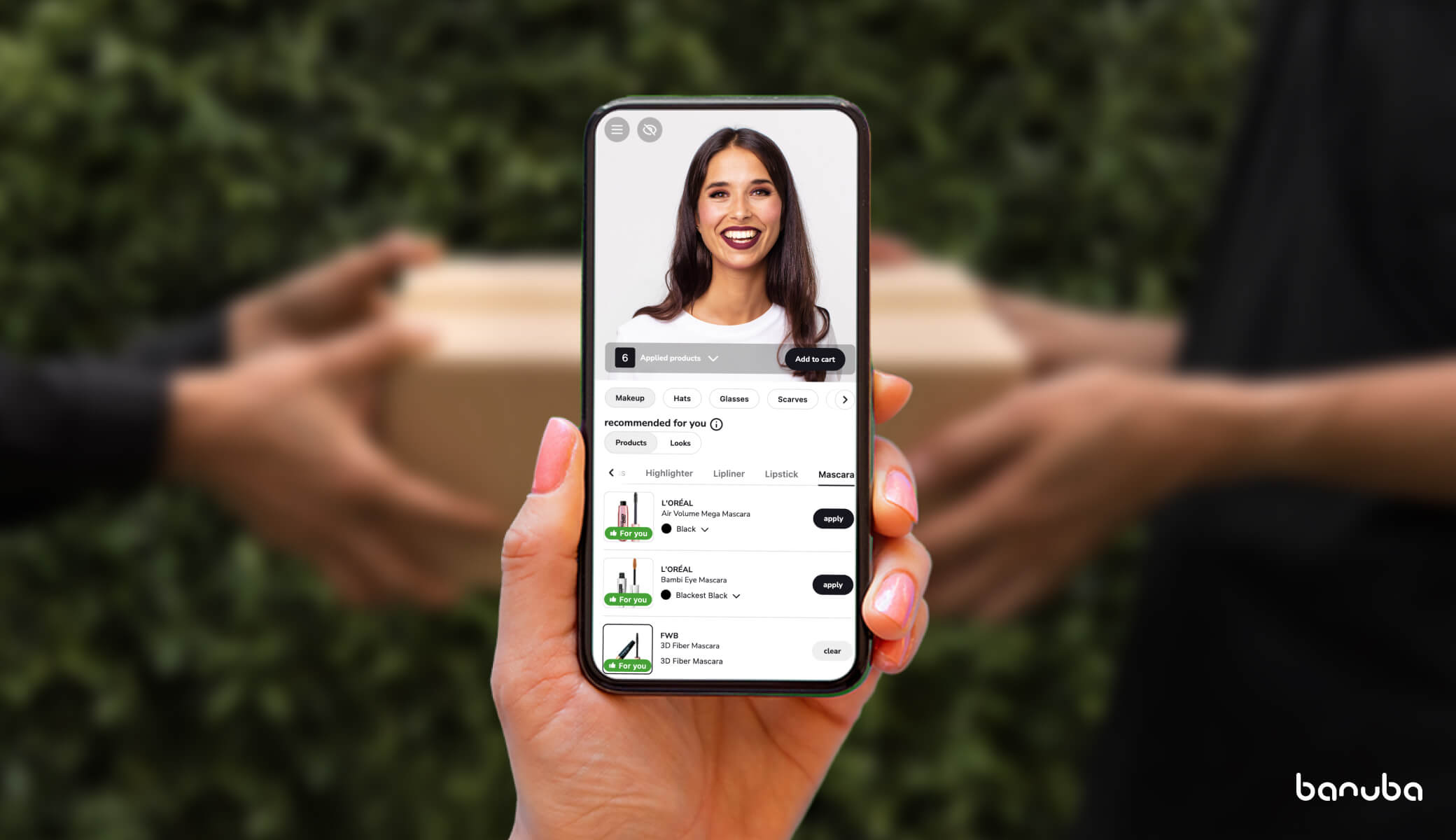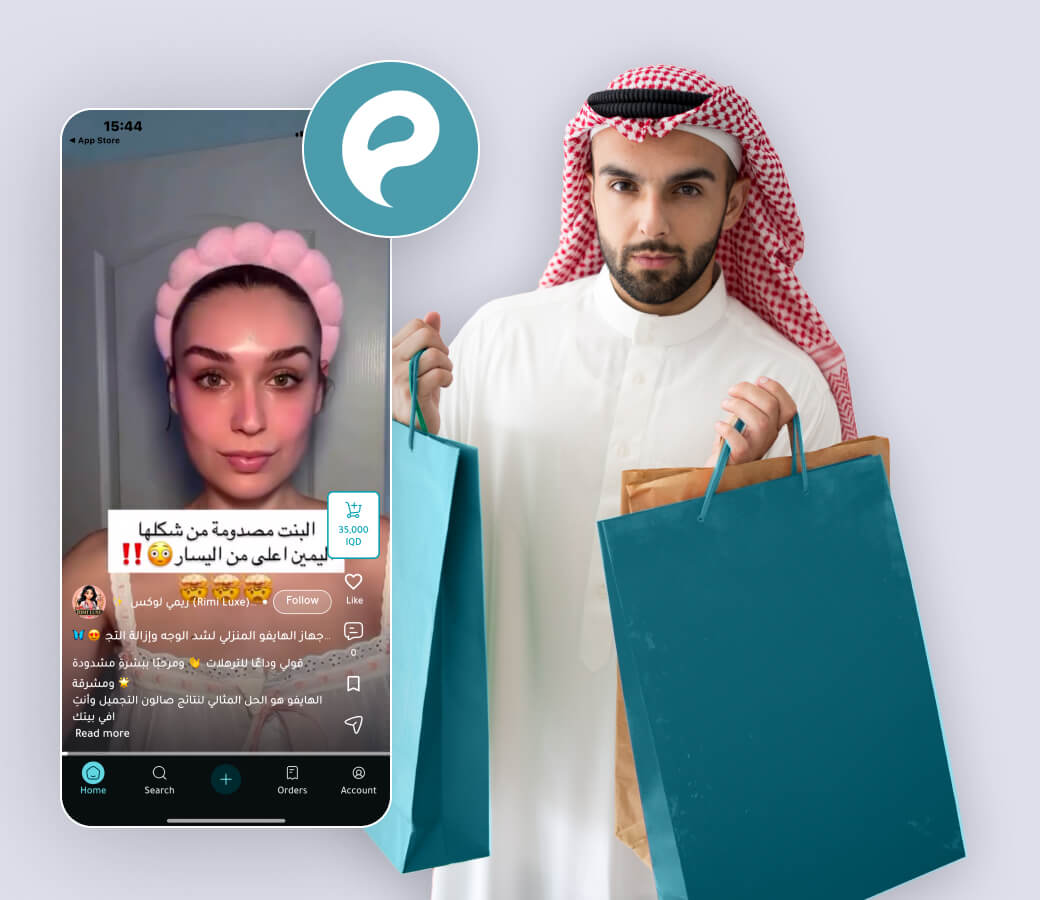[navigation]
TL;DR
- Problem: E-commerce return rates are high due to inaccurate descriptions, poor fit, defective products, and bracketing.
- Traditional solutions: Detailed descriptions, sizing charts, and sustainable packaging help but have limitations.
- AR as a solution: AR offers virtual try-ons, enhancing customer confidence and reducing misfits. 43% of smartphone users prefer brands with AR.
- Success stories: Fenty Beauty, Sephora, and L’Oréal use AR to boost engagement and reduce returns.
- Beyond returns: AR increases engagement by 200%, boosts conversions up to 94%, and builds brand loyalty while reducing operational costs.
Problem: How to Reduce Returns in e-Commerce

Returns are a costly headache, and it’s getting worse. The main reasons for returns include:
- Inaccurate product descriptions: Have you ever ordered something described as “fitted” only to realize “fitted” was a loose interpretation? The virtual world has a way of over-promising and under-delivering. An item that looks like a 10/10 on the website can feel like a 3/10 in real life, prompting a quick trip back to the post office. 22% of returns occur because the product doesn’t match its description or looks different.
- Poor fit: This is the big one for fashion, accessories, and beauty. According to statistics, sizing, fit, and color caused the majority of returns, 45%, growing from 38% in 2020. Online shoppers gamble with size charts that might as well be hieroglyphics. And in cosmetics, the wrong shade is a recipe for disaster (and a fast return label).
- Change of mind: Impulsive and unreasonable purchases when you open the package and don't understand what you were thinking when you ordered this product. Or you buy something, see it, and realize you don't need it. People just change their minds.
- Defective or wrong product: Ever eagerly open a delivery, only to find that it’s broken, missing pieces, or, even worse, not the product you ordered? This is a significant issue — 56% of returns result from customers receiving defective or incorrect items. It’s one of the most frustrating experiences for shoppers, leading to immediate returns and customer dissatisfaction.
- Bracketing: A growing trend in online shopping among 63% of consumers, bracketing involves buying multiple sizes, colors, or variations of the same product to keep one and return the rest. Annually, bracketing accounts for 15% of returns. While it offers consumers a way to ensure they get the right fit or style, it creates a significant challenge for retailers. If you can still find some excuses for the buyer with bracketing, then staging (buying high-end items to create social media content and returning them) and wardrobing (getting products for single wear to return) show an irresponsible attitude.
So, how to reduce returns in e commerce fashion, beauty, and accessories domains? Let’s dive in.

Reducing Online Returns: Traditional Methods vs. Modern Solutions
Historically, businesses have used a variety of methods to manage returns:
- Detailed product descriptions and images: These help set customer expectations but only go so far. A product image won’t reveal how an item looks on you, which is why sizing issues remain a huge problem.
- Dynamic sizing charts and customer reviews: These help reduce uncertainty, but they don’t completely eliminate the guessing game.
- Sustainable packaging and policies: Companies like Patagonia have implemented sustainable packaging solutions and clear return policies to manage expectations and reduce returns. While effective, they don’t tackle the root cause: fit and product mismatch.
However, solutions AR for eCommerce provide a fresh, innovative approach directly targeting the core issue.
AR Solutions for eCommerce: Fashion and Cosmetics

Augmented Reality is the superhero here, and it’s not just for gaming and trying on dog’s ears on Instagram or TikTok anymore. AR and AI will top the list if you check the latest eCommerce trends.
Consumers increasingly seek out brands that offer AR features. A study by Google found that 43% of smartphone users expect beauty brands to incorporate AR for a more engaging and personalized shopping experience. Besides, 98% of Americans who leverage AR for online shopping found it helpful.
This growing demand highlights the competitive advantage AR offers to businesses that invest in it. As more shoppers lean toward these interactive experiences, brands using AR not only attract tech-savvy consumers but also retain their loyalty by providing an innovative and immersive shopping journey. You can check our complete guide to learn more about AR in eCommerce.
AR solutions for eCommerce Success Stories
As strange as it may sound, globally, it all started with Pokémon Go in 2016. Global brands saw the potential in using augmented reality in marketing and sales, and the pandemic became a forced trigger that changed eCommerce forever. Even in 2019, for 71% of shoppers, a retailer offering AR motivated them to buy more. Indeed, brands that used augmented reality saw a 200% increase in sales. So, let's take a look at successful AR use cases.
- Fenty Beauty integrated AR technology to offer customers a virtual try-on feature called “Try Shade On.” This tool allows consumers to virtually test over 400 shades of products. Customers can see how products look from various angles and even adjust for different lighting conditions, providing a personalized and immersive experience. This virtual try-on capability not only boosts consumer confidence in purchasing but also significantly reduces the likelihood of product returns due to color or product type mismatches.
- TRYO: This platform offers a multi-category AR experience covering footwear, eyewear, and accessories. A study highlighted that 66% of shoppers using AR were less likely to return products, demonstrating how realistic virtual try-ons can lead to more confident purchases. Additionally, 80% of users felt more confident in their buying decisions when using AR.
- Brands under L’Oréal, such as Urban Decay, NYX, and Maybelline, offer AR try-ons for their makeup products directly through social media channels. By leveraging these tools, L’Oréal has enhanced the shopping experience, targeting younger demographics already engaged on these platforms. This strategy has boosted online engagement and led to a noticeable reduction in return rates, as customers can make informed and confident purchase decisions.
- Warby Parker’s virtual try-on feature for eyewear employs facial analysis technology to match frames to the customer’s face shape, increasing purchase satisfaction. This innovation has reduced return rates, making it an effective solution for eyewear e-commerce.
These success stories showcase AR’s versatility and its potential to reshape various retail segments, making it an indispensable tool for businesses seeking how to reduce returns in e commerce and stay ahead of their competitors.

AR Solutions for eCommerce: Beyond Return Reduction

AR technology goes beyond reducing online returns; it revolutionizes the entire shopping experience. Not only are AR product experiences 200% more engaging, but 61% of consumers actively prefer AR-enabled retailers. This increased interaction boosts conversion rates by 94% and increase the add-to-cart rate in eCommerce as customers gain confidence in product fit and quality. Additionally, retailers report a 22% reduction in returns thanks to AR’s ability to offer accurate, immersive product visualizations that align closely with consumer expectations.
Beyond reducing returns, AR builds brand loyalty and satisfaction. It creates a seamless, interactive shopping journey that encourages repeat purchases while lowering operational costs for processing returns. The data underscores AR's power as a sales driver and a critical tool for building lasting customer relationships and increasing overall profitability for e-commerce businesses.
Reducing Online Returns with AR Solutions for eCommerce
As 2021 is long gone, augmented reality in eCommerce is not limited only to business giants. Off-the-shelf AR SDKs and virtual try-on solutions for e commerce like Banuba enable fast and painless integration for all sizes of companies - from SMEs to huge enterprises.

Banuba’s virtual try-on platform isn’t limited to just one industry; it’s versatile, serving fashion, cosmetics, eyewear, and jewelry. Its adaptability makes it an ideal choice for businesses looking to enhance customer experience across diverse product categories.
- Fashion: Banuba provides a virtual fitting room experience where customers can try on accessories like jewelry, watches, headwear, and even eyewear. It adjusts for various body types and face shapes, giving an accurate visualization and significantly reducing the misfit rates common in online shopping.
- Beauty: Banuba’s technology offers realistic makeup try-ons, allowing users to test shades of lipstick, eyeshadow, nail polish, foundation, and other products directly on their skin tone. This helps ensure customers choose the right product the first time, minimizing costly returns. It doesn’t stop at makeup and also offers and innovative AI-powered skincare VTO, offering product recommendations based on the smart analysis.
Key Features That Set Banuba Apart

Advanced Face and Body Tracking Technology
Banuba’s platform uses precise facial and body tracking technology, offering a hyper-realistic experience that few competitors match. This level of accuracy ensures that virtual try-ons look and feel true to life, boosting customer confidence.
Scalable Integration
Designed with e-commerce businesses in mind, Banuba’s solution easily integrates with various platforms, operating on web, Android, iOS, desktop, and smart mirrors and making it a flexible choice for both small boutiques and large retailers. The ease of integration reduces setup time and costs, appealing to e-commerce owners who want a quick, efficient solution.
Customization and Branding Capabilities
Banuba allows businesses to customize the virtual try-on experience, matching it with their brand’s aesthetics. The product’s digitalization process can take as little as 48 hours. This helps create a cohesive shopping journey that not only enhances customer satisfaction but also strengthens brand loyalty.
Real-Time Product Recommendations
One of Banuba’s unique features is its AI-driven product suggestion tool. The platform suggests products based on the customer’s preferences, smart individual features analysis, and virtual try-on interactions, increasing upselling opportunities and driving higher conversion rates.
Omnichannel Support
Banuba’s AR technology is not confined to desktop use; it’s optimized for mobile devices and in-store applications as well. Retailers can implement the solution across various channels, ensuring customers have access to a seamless experience, whether they’re shopping online or in a physical store.
Conclusion
The world of e-commerce is changing, and the pressure is on for businesses to reduce high return rates, especially in fashion and cosmetics. While traditional methods have their place, AR solutions for eCommerce offer a comprehensive, future-proof solution. Give it a try today to grow tomorrow.












